Moniek Bloks's Blog, page 136
September 23, 2021
Here’s why Charles can be King while married to a divorcee when Edward VIII couldn’t
Why did King Edward VIII have to abdicate while Charles can become King while married to a divorcee? (And in Charles’s case, also being a divorcee himself!)
In January 1936, the Prince of Wales succeeded his father, King George V and not only became King but also Defender of the Faith and Supreme Governor of the Church of England. The Archbishop of Canterbury at the time was Cosmo Lang, who vehemently disapproved of the King’s relationship with the (then still married) Wallis. Nevertheless, he did not discuss his disapproval with the King at first, but rather with other members of the royal family, such as Queen Mary and the Duke and Duchess of York. By October, Wallis had been granted her divorce nisi and now just needed to wait out the six-month waiting period for her divorce to become final. The King was set on marrying her and making her Queen.
Technically, the King was free to marry whomever he wanted. However, it would be unconstitutional for the King to marry against the advice of his ministers. It wasn’t until early November 1936 that the King finally told his adviser Walter Monckton that he intended to marry Wallis once her divorce had become final. Monckton was not surprised but told the King to keep his intentions private for now. However, the King did not intend to do that, and soon the Prime Minister and other senior members of the government were discussing the situation. In no uncertain terms, they advised for Wallis to leave the country immediately. Wallis herself was exasperated. She said, “They do not understand that if I did so, the King would come after me regardless of anything. They would then get their scandal in a far worse form than they are getting it now.”1
There were just two legal statutes to consider. The Act of Settlement regulated the passage of the Crown to the House of Hanover, and it stipulated that potential heirs and successors could only marry a Roman Catholic if they gave up their dynastic rights. The Royal Marriages Acts decreed that all members of the royal family were required to obtain the sovereign’s consent before contracting a marriage. As King, he was obliged to follow the Act of Settlement, but he was exempt from the Royal Marriages Act. There was also no law against marrying a divorcee.
From a religious standpoint, there were more serious issues. The Church of England was strongly opposed to Anglican ministers performing marriages that involved parties who still had a former spouse living. The Archbishop considering the King to be a corrupting, morally questionable influence, and he feared having to anoint him in the coronation ceremony. This would signify the church’s blessing of a man who was openly living with his divorced mistress, whom he intended to marry. He wrote, “The thought of my having to consecrate him as King weighed on me as a heavy burden.2
Prime Minister Baldwin also did not approve. He later recalled, “That marriage would have involved the lady becoming Queen. I did tell His Majesty that I might be a remnant of the old Victorians but that my worst enemy would not say of me that I did not know what the reaction of the English people would be to any particular course of action… I pointed out to him that the position of the King’s wife was different from the position of the wife of any other citizen of the country. His wife becomes Queen; the Queen becomes the Queen of the country; and therefore, in the choice of a Queen, the voice of the people must be heard.”3 Most ironically, the Prime Minister suggested that it was perfectly acceptable if Wallis remained on as his mistress.
Although, at this point, the King had stated that he would be willing to go if he could not marry Wallis, he did float the idea of a morganatic marriage. This had no recent precedent in England and had a legal impediment. The Statute of Westminster, which had formally severed sovereign authority of Great Britain over its dominions, allotted the dominion heads and parliament the right of consultation and assent where any alterations of the succession to the throne were made, as well as any changes in royal titles or styles. Even a morganatic marriage would mean having to consult the dominions, and their approval was not in the least assured.4
In the end, the King choose Wallis, and he ended up abdicating on 10 December 1936.
Nearly 70 years later, there was a divorced Prince of Wales who wanted to marry his equally divorced girlfriend. Now well out of the Victorian age and will into a new Elizabethan age, the Prince of Wales was actually the second of the sovereign’s children to remarry after a divorce. His younger sister Anne, Princess Royal, had divorced Mark Phillips in 1992 and had remarried to Timothy Laurence that same year. She did so in the Church of Scotland, which permitted remarriage, and the sovereign does not hold a leadership position.
By the time of Prince Charles’s remarriage, the Church of England also allowed remarriage at the discretion of the member of the clergy conducting the ceremony. This was made possible in 2002.5 The Archbishop of Canterbury also issued a statement that said, “These arrangements have my strong support and are consistent with Church of England guidelines concerning remarriage which the Prince of Wales fully accepts as a committed Anglican and as prospective Supreme Governor of the Church of England.”6
On 2 March 2005, the Privy council met to give effect to the Queen’s consent to the marriage in accordance with the Royal Marriages Act 1772, which Prince Charles needed as he was not exempt like his great-uncle was. This second marriage also ticked the boxes of the Act of Settlement as Camilla was not a Catholic. On Saturday 9 April, the day had finally come. The civil ceremony7 was attended by senior members of the family, excluding the Queen and Prince Philip, Duke of Edinburgh. Prince William, son of Prince Charles, and Tom Parker Bowles, son of Camilla, were the couple’s witnesses. Their wedding rings were made from Welsh gold.
With the support of the sovereign, the family, the church of England, and the people, it looks like Prince Charles will become King as a divorcee with a Queen by his side, who is also a divorcee. It’s the 21st century, after all.
The post Here’s why Charles can be King while married to a divorcee when Edward VIII couldn’t appeared first on History of Royal Women.
September 21, 2021
Anne de Pisseleu d’Heilly – The most beautiful among the learned and the most learned among the beautiful
Anne was born in 1508 in Picardy, France, to parents Guillaume de Pisseleu, seigneur d’Heilly, and his second wife Anne Sanguin de Meudon. The family were noble but not particularly wealthy. Anne’s father was married three times, and Anne was one of 23 siblings (though some sources say there were more). After her mother died, the family relocated to the château d’Heilly. Anne was raised and educated to a high standard by her stepmother; she was also instructed in courtly etiquette.
At the age of fourteen, Anne put her education to good use and moved to the French court in the early 1520s, becoming a Maid of Honour to Marie of Luxembourg, Countess of Vendôme, and later Louise of Savoy, the mother of King Francis I of France.
Louise of Savoy held great power at the French court and was behind many political decisions made by her son Francis. On two occasions, Louise was even made regent for her son when he was unable to rule for himself; the second regency was when Francis was held prisoner in Spain between 1525-1526. When Francis returned from captivity, it is believed that Louise began introducing him to Anne as a potential new mistress in the hopes he would get rid of Françoise de Foix. Louise disliked the de Foix family, and Françoise had already been his mistress for a decade by this point.
King Francis either fell for Anne naturally or followed his mother’s wishes and took Anne as a mistress, dismissing Françoise. Anne was soon made Lady-in-Waiting to the king’s new wife Eleanor of Austria and governess to his daughters. Around this time, King Francis also began to wear Anne’s colours which was a clear public display of favour. At this early stage, Anne did not hold much political influence and remained in the shadow of Louise of Savoy, though her family was elevated in rank by her relationship with the king.
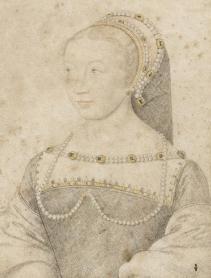 (public domain)
(public domain)When Louise of Savoy died in 1531, theoretically, Anne could have filled the void and begun to wield more power politically, yet at this point, this did not happen. Anne was still the King’s official mistress, and he professed his love and favour for her by marrying her to Jean de Brosse in 1532, which made Anne the Duchess of Étampes. However, politically the Grand Master of France, Anne de Montmorency, and his faction controlled the king during this time. King Francis was obsessed with the idea of regaining lands he had lost in Italy, and Montmorency was working on negotiating this for the King.
Anne was part of a different political faction to Anne de Montmorency, and she spent much of her time with Francis’ sister Marguerite of Navarre, who was always by her brother’s side. The quarrels at court also put Anne against Francis’ son Henry (the future Henry II) and his mistress Diane de Poitiers who was always seen as Anne’s rival. When Anne de Montmorency fell from favour in 1540, Anne the mistress seemed to suddenly step into the spotlight. Looking at reports and letters from ambassadors, however, we can see that Anne had been mentioned as a high-ranking figure in correspondence with the courts of King Henry VIII of England and Charles V, Holy Roman Emperor for some time, yet now seamlessly transitioned into a more political role without it seeming inappropriate.
By 1540, Anne was often entertaining ambassadors and other dignitaries and was recorded alongside the Queen of Navarre in documents and held in the same regard. Marguerite, Queen of Navarre, often sent Anne to speak to the King about some matters instead of doing so herself because “if she herself intervened she would be thought too partial.” Before long, Anne dominated court life; she outshone the Queen of France at all royal functions and those wishing to gain favour with the King knew they had to first gain her approval and friendship. Anne’s influence was so strong that as a Protestant, she managed to convince Francis to be lenient on French Huguenots. Anne attended council meetings alongside the King and was called “the real president of the King’s council.”
Anne used her power and influence to promote her brothers and sisters into leading church roles throughout France but also used her power to support the arts by financing poets and writers and renovating many of the King’s properties. Anne’s influence could be seen everywhere.
In the later years, Anne became more known for her rivalry with Diane de Poitiers, which became quite embarrassing to the King. Anne backed certain poets and artists, Diane backed others, Anne was Protestant, Diane was Catholic, Anne was by Francis’ side, and Diane was the lover of his estranged son Henry. As a result, the court began to split into factions that surrounded these two women. As the King became more advanced in years, however powerful Anne was, it was clear that Diane would come out on top of this power struggle.
In 1547, King Francis I of France died, and Henry became king. Anne was removed from the court by Henry and narrowly escaped being charged with treasonable offences. Her power had been cut off overnight, and people began to turn against her and look to Diane for favour. Even Anne’s husband accused her of disgracing his family and of theft and had her locked up in a castle for a time. Anne lost many of her properties, and the gifts and jewels given to her by the King were then given to Diane instead.
Despite much of the French court turning against her, Anne managed to keep hold of many of her assets and remained a very wealthy woman. In addition, Anne used her wealth to broker good marriages for her nieces and nephews, who she remained close to and she died in 1580 on her estate in Brittany. Thus, Anne far outlived King Henry II and her rival Diane de Poitiers.
Anne, Duchess of Étampes, completely changed the role of the royal mistress in France. No longer was a mistress just a sexual partner and companion, Anne showed that a mistress could be highly educated and that court factions could revolve around the mistress. Following on from Anne, France’s mistresses became highly visible patrons of the arts, they controlled courtly functions and headed political factions in a way that had never been seen in earlier mistresses.1
The post Anne de Pisseleu d’Heilly – The most beautiful among the learned and the most learned among the beautiful appeared first on History of Royal Women.
September 19, 2021
A Golden Coach with an uncertain future – Exhibition at the Amsterdam Museum
The Dutch royal Golden Coach was gifted to Queen Wilhelmina in 1898 on the occasion of her inauguration from the citizens of Amsterdam, and she first used it on her wedding day on 7 February 1901. Since then, it has been used for ceremonial occasions, such as Prinsjesdag – when the monarch addresses a joint session of the States-General of the Netherlands.
 Queen Wilhelmina viewing The Golden Coach at the Palace of Industry on the day after her inauguration on Wednesday, September 7, 1898. Collection: Amsterdam City Archives.Click to view slideshow.
Queen Wilhelmina viewing The Golden Coach at the Palace of Industry on the day after her inauguration on Wednesday, September 7, 1898. Collection: Amsterdam City Archives.Click to view slideshow.(As you can see, the glass enclosure makes it quite difficult to see and photograph the coach)
The coach itself is made of teak wood and is mostly covered in gold leaf. It also has several paintings by Nicolaas van der Waay and symbolic ornaments. In 2011, several members of parliament suggested removing the left panel, which portrays the Tribute from the colonies, which, according to activists, showed slaves making gestures of submission to the royal house. However, Historian Susan Legêne says the panel refers to the relations with the colonies at that point. This discussion has led to people questioning what should happen to the coach.
 Tribute of the Colonies (public domain)
Tribute of the Colonies (public domain)Before going on display at the Amsterdam Museum, it was renovated, but there is still no definite plan. Should it go back into service? The museum also offers a room for debate on this subject, and King Willem-Alexander will decide its fate after the closing of the exhibition.
Click to view slideshow.The restoration of the coach
For now, the golden coach stands in the courtyard of the Amsterdam Museum in a glass enclosure. There are also several other items on display – such as Queen Wilhelmina’s wedding dress and other items relating to the house of Orange and the gifting of the coach.
Click to view slideshow.Overall, I enjoyed the exhibition as it came with plenty of information, even if you didn’t use the audio tour. I loved the addition of Queen Wilhelmina’s wedding dress as I had never seen it before in real life. The study room used for discussion on the future of the coach was a really good idea, and it looked like it was being used well. However, I was a little disappointed by how badly you’re able to actually see the coach due to all the reflections on the glass.
The exhibition will also be accompanied by a publication, which is available in both Dutch and English.
The exhibition will run until 27 February 2022. You can plan your visit here.
The post A Golden Coach with an uncertain future – Exhibition at the Amsterdam Museum appeared first on History of Royal Women.
September 17, 2021
Book News October 2021

Charles II’s Favourite Mistress: Pretty, Witty Nell Gwyn
Hardcover – 30 August 2021 (UK) & 30 October 2021 (US)
Nell Gwyn, the most infamous mistress of Charles II, was a commoner raised from the dingy back alleys of London to the stage and into a king’s arms. Hers was a true rags to riches story that saw a young girl rise from selling oranges to capturing the heart of a king. The Restoration period was one of change. After the troubled years of the English Civil War, it was time for pleasure, debauchery and entertainment with the ‘Merry Monarch’ restored to the throne. Nell was one of the first actresses on stage; a loveable comedienne who wowed audiences with her wit and charm. She fell in love with Charles Hart (one of the leading actors of the time), had a torrid affair with Lord Buckhurst and ultimately ended up in the king’s bed. She stayed on the stage for six years, but she stayed in the king’s heart for seventeen- his only mistress who was faithful to him. Set against the backdrop of Restoration London, this book charts Nell’s life and that of her family and friends – from her drunken mother and troublesome sister to the most notorious wits of the age John Wilmot, 2nd Earl of Rochester and George Villiers, 2nd Duke of Buckingham. Nell had a generous heart and a mischievous spirit, and was friends with people from all walks of life. The only woman she really detested was another of the king’s mistresses, Louise de Kerouaille, known as the French Spy. This highly entertaining book will tell the story of Nell’s life – the good and the bad – and show why Nell truly embodies the spirit of the Restoration.

The Two Isabellas of King John
Hardcover – 30 August 2021 (UK) & 30 October 2021 (US)
King John of England was married to two women: Isabella of Gloucester and Isabelle of Angoulême. The two women were central to shaping John and his reign, each in her own way molding the king and each other over their lives. Little is known about Isabella of Gloucester and she has largely become an historical footnote; Isabelle of Angoulême has a reputation as a witch and poisoner. However, both were products of their time, victims and pawns of the powerful men whose voices overwrote the experiences of women. By examining these two very different women through a modern feminist lens, _The Two Isabellas_ offers new insight into one of England’s lesser-known queens and a different interpretation of one of its least popular kings. In The Two Isabellas of King John, Kristen McQuinn offers new and intriguing insights into two of England’s important yet little understood queen-consorts, the wives of King John. Taking a feminist light, McQuinn brightly shines it on both England’s least well-known consort, Isabella of Gloucester, his first wife, and one of its least popular, Isabelle of Angoulême, his child bride.
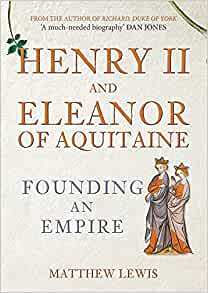
Henry II and Eleanor of Aquitaine: Founding an Empire
Hardcover – 15 September 2021 (UK) & 1 October 2021 (US)
Henry II became King of England in 1154 after twenty years of civil war. He was the first Plantagenet king, the founder of England’s most successful and longest-ruling dynasty. But Henry did not come to the throne alone. He had married Eleanor of Aquitaine, a feisty, formidable and powerful woman ten years his senior. Eleanor had spent fifteen years married to Louis VII of France before he divorced her, only to be angered when she married his young rival. Together, they were a medieval power couple who soon added the ultimate rank of king and queen consort to their list of titles. With them, the Angevin Empire was born. Over the decades, a wedge was driven between the king, fiercely protective of his empire, and Eleanor, who felt restrained in her husband’s shadow. Henry imprisoned his wife, fought his elder sons and pinned his hopes on his youngest, whose betrayal was the last straw. This book charts the early lives of Henry and Eleanor before they became a European power couple and examines the impact of their union on contemporaries and European politics. It explores the birth of the Angevin Empire that spread from Northumberland to the Mediterranean, and the causes of the disintegration of that vast territory, as well as the troublesome relationships between Henry and his sons, who dragged their father to the battlefield to defend his lands from their ambitious intriguing.
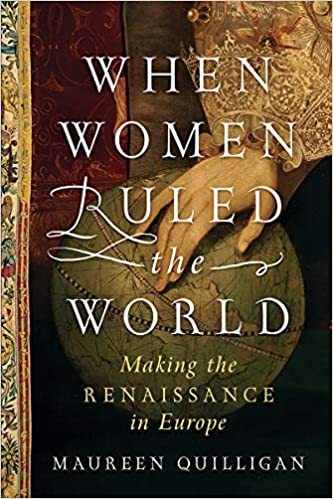
When Women Ruled the World: Making the Renaissance in Europe
Hardcover – 12 October 2021 (US) & 12 November 2021 (UK)
Sixteenth-century Europe was a time of destabilization of age-old norms and the waging of religious wars―yet it also witnessed the remarkable flowering of a pacific culture cultivated by a cohort of extraordinary women rulers who sat on Europe’s thrones, most notably Mary Tudor; Elizabeth I; Mary, Queen of Scots; and Catherine de’ Medici.
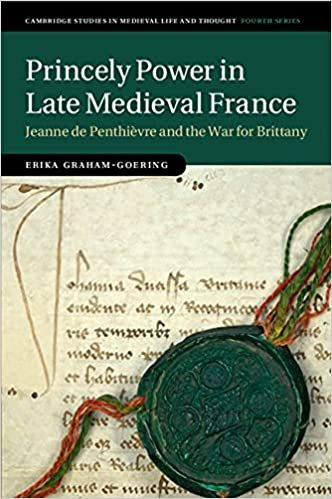
Princely Power in Late Medieval France: Jeanne de Penthièvre and the War for Brittany (Cambridge Studies in Medieval Life and Thought: Fourth Series)
Paperback – 28 October 2021 (US & UK)
Jeanne de Penthièvre (c.1326–1384), duchess of Brittany, was an active and determined ruler who maintained her claim to the duchy throughout a war of succession and even after her eventual defeat. This in-depth study examines Jeanne’s administrative and legal records to explore her co-rule with her husband, the social implications of ducal authority, and her strategies of legitimization in the face of conflict. While studies of medieval political authority often privilege royal, male, and exclusive models of power, Erika Graham-Goering reveals how there were multiple coexisting standards of princely action, and it was the navigation of these expectations that was more important to the successful exercise of power than adhering to any single approach. Cutting across categories of hierarchy, gender, and collaborative rule, this perspective sheds light on women’s rulership as a crucial component in the power structures of the early Hundred Years’ War, and demonstrates that lordship retained salience as a political category even in a period of growing monarchical authority.
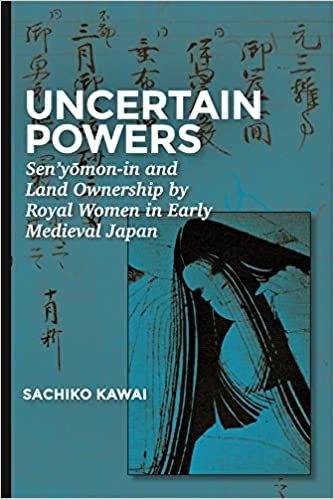
Uncertain Powers: Sen’yōmon-in and Landownership by Royal Women in Early Medieval Japan (Harvard East Asian Monographs)
Hardcover – 19 October 2021 (US) & 26 November 2021 (UK)
Uncertain Powers is an original and much-needed analysis of female leadership in medieval Japan. In challenging current scholarship by exploring the important political and economic roles of twelfth- and thirteenth-century Japanese royal women, Kawai questions the traditional view of the era as one dominated by male retired monarchs and a warrior government. Instead the author populates it with royal wives and daughters who held the title of premier royal lady (nyoin) and owned extensive estates across the Japanese archipelago. Nyoin, whose power varied according to marital status, networks, and age, used their wealth and human networks to build temples and organize their entourages as salons to assert religious, cultural, and political influence. Confronted with social factors and gender disparities, they were motivated to develop coping strategies, the workings of which Kawai masterfully teases out from the abundant primary sources.

Escorting the Monarch: We Lead Others Follow
Paperback – 30 October 2021 (UK) & 30 December 2021 (US)
Escorting the Monarch is as close to an official history of the Metropolitan Police’s ‘Special Escort Group’ (SEG) as one could hope for. You may have seen the team at work; as the combination of motorcycles and cars pass you by, they glide elegantly and seemingly effortlessly through busy traffic. Developing a dedicated and diligent team culture, they are masters of their trade. They hold a well-earned reputation for excellence amongst their peers; delivering their passengers (and cargo) on time, safely, in a great deal of style, and without fuss or mishap. Professional and precise in the execution of their operations, they are neither shaken nor stirred. Although the work of the SEG demands exquisitely high levels of presentation there is little room for gloss or glitter. The individuals and property they are charged to protect are assessed by government to need the highest possible levels of protection. From queens, kings, presidents and emperors, to priceless works of art, terrorists and high risk prisoners, the group escort them all.
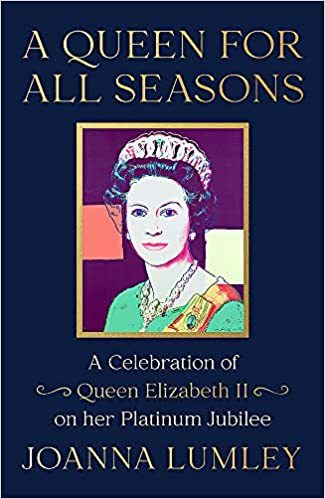
A Queen for All Seasons: A Celebration of Queen Elizabeth II on her Platinum Jubilee
Hardcover – 28 October 2021 (UK) & 1 March 2022 (US)
A Queen For All Seasons, edited and introduced by Joanna Lumley, is a perceptive, touching and engaging tribute to this unique woman. A treasure chest of first-hand writings, insights and snapshots of the Queen during key moments of her reign to form a vibrant portrait of the woman herself and the extraordinary role she plays.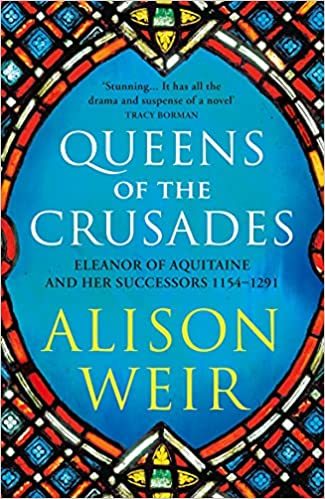
Queens of the Crusades: Eleanor of Aquitaine and her Successors (England’s Medieval Queens)
Paperback – 21 October 2021 (UK) & unknown (US)
Alison Weir’s ground-breaking history of the queens of medieval England now moves into a period of even higher drama, from 1154 to 1291: years of chivalry, dynastic ambition, conflict with the church, baronial wars, and the all-pervading bonds of feudalism. We see events such as the murder of Becket, Magna Carta and the birth of parliaments from a new perspective. Her narrative begins with the formidable Eleanor of Aquitaine, whose marriage to Henry II establishes a dynasty which rules for over three hundred years and creates the most powerful empire in western Christendom – but also sows the seeds for some of the most destructive family conflicts in history and for the collapse, under her son King John, of England’s power in Europe. The lives of Eleanor’s successors were just as remarkable: Berengaria of Navarre, queen of Richard the Lionheart, Isabella of Angoulême, queen of John, and Alienor of Provence, queen of Henry III, and finally Eleanor of Castile, the grasping but beloved wife of Edward I.
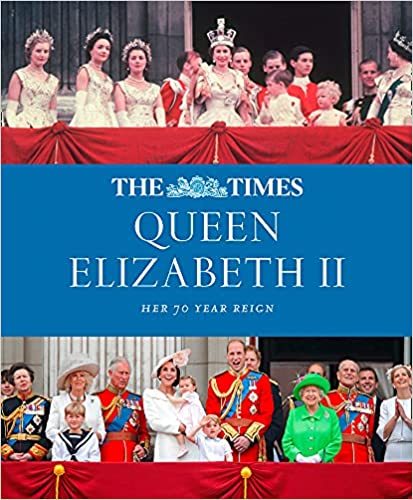
The Times Queen Elizabeth II: Her 70 year reign
Hardcover – 14 October 2021 (UK) & 1 February 2022 (US)
Discover how the reign of Britain’s longest-serving monarch unfolded, as seen through fascinating Times articles and photography.
Published to commemorate The Queen’s Platinum Jubilee this full-colour book is a detailed profile of Britain’s longest-serving monarch.
The story of a life dedicated to public service is told from her time as a young princess to a hugely respected head of state.
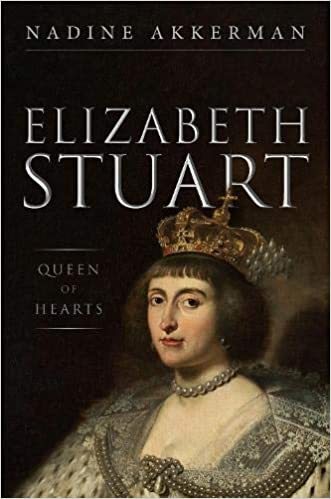
Elizabeth Stuart, Queen of Hearts
Hardcover – 14 October 2021 (UK) & 1 December 2021 (US)
Elizabeth Stuart is one the most misrepresented – and underestimated – figures of the seventeenth century. Labelled a spendthrift more interested in the theatre and her pet monkeys than politics or her children, and long pitied as ‘The Winter Queen’, the direct ancestor of Elizabeth II was widely misunderstood. Nadine Akkerman’s biography reveals an altogether different woman, painting a vivid picture of a queen forged in the white heat of European conflict.
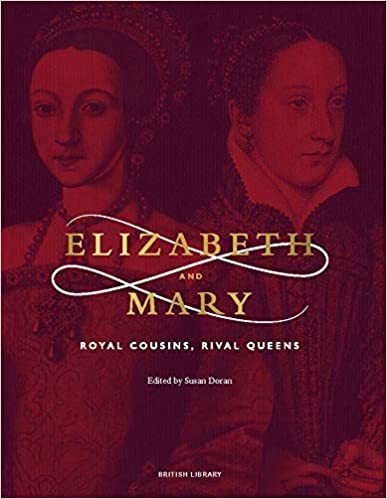
Elizabeth I and Mary, Queen of Scots: Royal Cousins, Rival Queens (The British Library Exhibition Book)
Hardcover – 8 October 2021 (UK) & 1 January 2022 (US)
This book seeks to refresh and retell the story of Queen Elizabeth I and Mary, Queen of Scots through their own words. Accompanying a major British Library exhibition, Elizabeth and Mary: Royal Cousins, Rival Queens brings new insights to the familiar tale of two powerful women whose relationship dominated English and Scottish politics for thirty years. Their personal history and struggle for dynastic pre-eminence are described and explained against the backdrop of religious conflict, rebellion, fear of foreign invasion, espionage and treason.

Elizabeth II: Princess, Queen, Icon
Hardcover – 7 October 2021 (UK) & 23 November 2021 (US)
With just under a thousand portraits of Queen Elizabeth II, the National Portrait Gallery boasts some of the most treasured and famous official portraits of the Queen captured at key historic moments, as well as day-to-day images of the monarch at home and with family, following her journey from childhood, to princess and Queen, mother and grandmother. This publication highlights the most important portraits of Elizabeth II from the Gallery’s Collection. Paintings and photographs from the birth of Elizabeth II to the present will take readers on a visual journey through the life of Britain’s foremost icon.

Mary and Philip: The Marriage of Tudor England and Habsburg Spain (Studies in Early Modern European History)
Paperback – 5 October 2021 (UK) & 22 February 2022 (US)
Mary I, eldest daughter of Henry VIII, was Queen of England from 1553 until her death in 1558. For much of this time she ruled alongside her husband, King Philip II of Spain, forming a co-monarchy that put England at the heart of early modern Europe. In this book, Alexander Samson presents a bold reassessment of Mary and Philip’s reign, rescuing them from the neglect they have suffered at the hands of generations of historians. The co-monarchy of Mary I and Philip II put England at the heart of early modern Europe. This positive reassessment of their joint reign counters a series of parochial, misogynist and anti-Catholic assumptions, correcting the many myths that have grown up around the marriage and explaining the reasons for its persistent marginalisation in the historiography of sixteenth-century England. Using new archival discoveries and original sources, the book argues for Mary as a great Catholic queen, while fleshing out Philip’s important contributions as king of England.
The post Book News October 2021 appeared first on History of Royal Women.
September 16, 2021
Book Review: Medical Downfall of the Tudors by Sylvia Barbara Soberton
*review copy*
The Tudors are perhaps one of the most famous dynasties of all time, producing such famous figures as King Henry VIII and his daughters Queen Mary I and Queen Elizabeth I. But, as public figures, their bodies and health were not their own. Medical Downfall of the Tudors by Sylvia Barbara Soberton means to delve into their medical history.
Although I am by no means a medical expert, the medical theories brought are fascinating. However, it would have been nice to have delved into some a little bit more, and sometimes the book focussed a little too heavily on the general history of the Tudors, which is not why one would buy this book. I was also a little put off by some of the assumptions being made. For example, Queen Mary I’s illnesses all seem to be written off as somehow psychosomatic, and for some reason, that felt a little unfair. Mary certainly had a difficult time, but this could also have been because of her illnesses rather than being the cause of her illnesses.
Since we are not equipped to make a modern medical diagnosis on any of the Tudors, as we simply do not have enough information, most of the questions we still have will remain unanswered. Nevertheless, Medical Downfall of the Tudors is a fascinating look into the dynasty, and it’s certainly nice to see them from a different angle.
Medical Downfall of the Tudors by Sylvia Barbara Soberton is available now in the UK and the US.
The post Book Review: Medical Downfall of the Tudors by Sylvia Barbara Soberton appeared first on History of Royal Women.
September 15, 2021
The Year of the Duchess of Windsor – Breaking up with the King
By September 1936, Wallis’s marriage to Ernest had completely broken down, and Ernest was living with Mary Raffray, whom he would later marry. Wallis’s divorce had been set in motion, the King had settled a very generous sum of money on her, and he was determined to marry her. Wallis began to panic, wondering how it would all end up. She could no longer escape; the King would not let her go, but that did not mean that she did not try.
On 16 September 1936, two days after arriving in Paris, she wrote him a frank letter breaking off their relationship.
She wrote,
“It is too stupid to have a cold at just this moment. However I am tucked up in bed feeling very very rotten. But I did have a trout and 2 ears of delicious corn. This is a difficult letter to write – but I feel it is easier than talking and less painful. I must really return to Ernest for a great many reasons which please be patient and read. The first being because we are so awfully congenial and understand getting on together very well – which really is an art in marriage. We have no small irritations one for the other. I have confidence in his being able to take care of me and of himself. In other words I feel secure with him and am only left with my side of the show to run. We each do our little jobs separately – with occasional help one for the other and it all runs smoothly no nerve strain. True we are poor and unable to do the attractive amusing things in life which I must confess I do love and enjoy – also the possession of beautiful things is thrilling to me and much appreciated but weighed against a calm and congenial life I choose the latter for I know I shall suffer greatly now I shall be a happier calmer old lady.
I have been here alone tonight but seen my friends etc. I should rather have my husband than mere friends. No one can fill that place and no one can care (unless one has a family) so much. I know Ernest and have the deepest affection and respect for him. I feel I am better with him than with you – and so you must understand. I am sure dear David that in a few months your life will run again as it did before and without my nagging. Also you have been independent of affection all your life. We have had lovely beautiful times together and I thank God for them and know that you will go on with your job doing it better and in a more dignified manner each year. That would please me so.
I am sure you and I would create only disaster together. I shall always read all about you – believing only half! – and you will know I want you to be happy. I feel sure I can’t make you so and I honestly don’t think you can me. I shall have Allen arrange the return of everything. I am sure that after this letter you will realize that no human being could assume this responsibility and it would be most unfair to make things harder for me by seeing me. Good-bye WE all say. WALLIS.”1
They spoke later that night on the telephone while he had not received the letter yet, and she voiced the same sentiments over the phone. He wrote that night, “Why do you say such hard things to David on the telephone sometimes? Hard things like you would prefer someone else with you tonight when you are sick that I would be bored that I don’t understand you and lots of others which hurt me so and show that lack of faith and confidence in me which makes me so terribly unhappy.[…] Please try and trust me like you love me and don’t have any doubts. I promise you there is not the slightest reason to.”2
When the King finally did receive her letter, he reportedly telephoned her at once, and according to Alan Lascelles, threatened to cut his throat if she did not come to him in Scotland.3 Wallis’s attempt to break up with him died a quiet death, and she duly appeared in Scotland not much later.
The post The Year of the Duchess of Windsor – Breaking up with the King appeared first on History of Royal Women.
September 14, 2021
Elisabeth Christine of Brunswick-Wolfenbüttel – The longest-serving Holy Roman Empress (Part two)
On 13 May 1717, Maria Theresa Walburga Amalia Christina, the future heiress, was born. Although her father certainly loved her, he could never bring himself to see her as his inevitable heir. Another daughter, named Maria Anna, was born in 1718 but then, it would be quite a while before Elisabeth Christine would fall pregnant again. As if the large doses of liquor weren’t doing enough damage already, Elisabeth Christine’s bedchamber was decorated with erotic images of manly beauty. Following an old superstition that Kings should be crowned in Prague before they could father male heirs, Charles duly had himself crowned in Prague. A fourth pregnancy in 1725 ended with the birth of Maria Amalia, who would die before her sixth birthday.
In desperation, Charles went on numerous pilgrimages to the shrine of Mariazell, while Elisabeth Christine was prescribed a rich diet that eventually led to her becoming so large that she was unable to walk unaided. She became short of breath, suffered from insomnia and dropsy. Despite not being able to settle without a son, Charles was openly distraught when Maria Amalia died in 1730 and would not let the court painter finish a portrait of the entire family. He also wrote of his concern for Elisabeth Christine in his diary when she was sick, calling her by her nickname “White Liz.” During her long tenure as Empress, Elisabeth Christine, like her predecessors, was a zealous advocate of religious observance, even more so than her husband. She was a generous patron of charitable causes and convents.
As was the custom, Elisabeth Christine and Charles saw their daughters at a set hour, mostly daily. Charles gave Maria Theresa the nickname “Mutz” but to the girls “Mami” was their governess and not Elisabeth Christine. During her daughter’s reign, it was noted that Elisabeth Christine “hardly was much beloved” by her daughter.1 The education of her daughters was mainly focussed on religion and Maria Theresa learned to speak French, Italian and some Spanish. Although her mother tongue was German, she only wrote it (semi-)phonetically. She was also taught music and singing. The girls were not taught to ride as ladies were not supposed to mount a horse.
In 1736, the marriage of her eldest daughter to Francis Stephen of Lorraine was arranged. He had lived at the Viennese court before he had succeeded as Duke of Lorraine. On 31 January, Francis asked first the Emperor and then Elisabeth Christine for the hand of their firstborn daughter and they were married on 12 February 1736. The bride entered the church flanked by her mother and her aunt Wilhelmine Amalie.
Almost a year to the date later, Elisabeth Christine became a grandmother for the first time with the birth of Maria Elisabeth. The family had fervently hoped for a boy, but over time the little girl became a favourite of her grandfather, and he nicknamed her “Liesl.” Tragically, she would die before her fourth birthday. The following year, Maria Theresa gave birth to Maria Anna, her first child to survive to adulthood. In 1740, a third daughter – named Maria Carolina – was born but she died shortly after her first birthday. Elisabeth Christine’s husband had always been in rather good health, but by the summer of 1740, he still had no grandsons. By July, it appeared that Maria Theresa was pregnant for the fourth time. In October, Charles went to Neusiedel Lake to go hunting as usual but the weather was particularly bad. He arrived at his hunting lodge with mild stomach pains but didn’t think much of it.
Over the next few days, the pain worsened and even a stew of mushrooms did not settle his stomach. He fell violently ill during the night and he was brought back to Vienna as he vomited and fainted along the way. His family gathered around him, though he ordered Maria Theresa to stay away as he feared that she would have a miscarriage. He spent the next week settling his affairs and provided Elisabeth Christine with a considerable income. On 20 October 1740, he died at the age of 55 and despite his best attempts at settling the succession on Maria Theresa, his death set off the War of the Austrian Succession. Five months later, Maria Theresa gave birth to a son and heir – he was named Joseph.
The following years were difficult as suddenly Elisabeth Christine’s sister-in-law Wilhelmine Amalie became her rival as her daughter Maria Amalia and son-in-law Charles Albert claimed the throne as well. Charles Albert managed to be elected Holy Roman Emperor and reigned until his death in 1745. It was Maria Amalia who persuaded her son to make peace with Maria Theresa and so Elisabeth Christine saw her son-in-law Francis elected Holy Roman Emperor in 1745, making Maria Theresa Empress. By then, she was also recognised as the sovereign of Austria, Hungary, Croatia, Bohemia, Transylvania, Mantua, Milan, Lodomeria and Galicia, the Austrian Netherlands, and Parma.
Elisabeth Christine had no political influence during her daughter’s reign and she used Hetzendorf Castle as her widow’s residence. She would live to see seven more children born to Maria Theresa. Her second surviving daughter Maria Anna married Francis’s younger brother Charles Alexander in 1744 but she tragically died in childbirth with their first child later that year.
With her health destroyed by the many “fertility treatments,” Elisabeth Christine died on 21 December 1750 at the age of 59. Her heart and entrails were taken from her body and placed in Heart Crypt in the Augustinian Church and the Ducal Crypt in St. Stephen’s Cathedral respectively. Her body was buried in the Imperial Crypt near her husband. With a tenure of just over 29 years, she was the longest-serving Holy Roman Empress consort.
The post Elisabeth Christine of Brunswick-Wolfenbüttel – The longest-serving Holy Roman Empress (Part two) appeared first on History of Royal Women.
September 12, 2021
Elisabeth Christine of Brunswick-Wolfenbüttel – The longest-serving Holy Roman Empress (Part one)
Elisabeth Christine of Brunswick-Wolfenbüttel is perhaps best known as the mother of the famous Habsburg ruler Maria Theresa but she was also the longest-serving Holy Roman Empress consort.
Elisabeth Christine was born on 28 August 1691 as the eldest daughter of Louis Rudolph, Duke of Brunswick-Wolfenbüttel and his wife Princess Christine Louise of Oettingen-Oettingen. She had two surviving sisters; Charlotte Christine, who married Alexei Petrovich, Tsarevich of Russia, and Antoinette, who married their father’s eventual heir Ferdinand Albert II, Duke of Brunswick-Wolfenbüttel.
Elisabeth Christine was raised as a Lutheran but when she was being considered as a bride for the future Charles VI, Holy Roman Emperor, she agreed to convert to Catholicism after extensive efforts by her grandfather Anton Ulrich. She agreed out of respect for him and his claim that God wished for this union. Her future mother-in-law Eleonore Magdalene introduced her to Catholicism and took her on a pilgrimage to Mariazell in 1706. Her conversion took place on 1 May 1707 in Bamberg. With the religious difference out of the way, there was more to discuss. As a future Empress, she would need to encompass the contemporary standards of beauty and deportment. Her character was studied and one witness said that he was not aware of anything that would render her unworthy and noted that her “countenance and manners are proper and not affected, speaks and writes in perfect French, skilled in the arts of women of her class [i.e. embroidery], God-fearing and graceful to all.”1 She also underwent a humiliating medical examination to prove her fertility to a doctor and a Jesuit confessor. She passed the test.
Elisabeth Christine married Charles by proxy in 1708. At the time, he was in Spain as he had declared himself King of Spain, following the death of his kinsman King Charles II in 1700. This was disputed by other claimants and led to the War of the Spanish Succession. He only really exercised power in Catalonia and the war was eventually settled in the favour of Philip, Duke of Anjou, who became King Philip V of Spain. But for now, Charles remained in Spain and Elisabeth Christine travelled to meet her new husband there.
He had been in the arms of his mistress Countess Althan but was prepared to be kind to the teenage Elisabeth Christine when she arrived. When she did, he was struck by her beauty and wrote to her father, “Although on every side I had been told in advance of the exceptional beauty and remarkable qualities of my angelic queen and consort (who is winning all hearts here), now that I have seen her everything that has been said about her is but a shadow devoured by the light of the sun. I have no words to express my exceeding happiness and satisfaction. I shall be eternally grateful to you for making it possible that this angel should become my queen. I only wish she had a consort worthy of her merits; but I will do my best to be to her a faithful husband. The treasure that has been committed to my care shall be truly guarded.”2
Pressure to produce a son would begin almost immediately as Charles’s rival for the Spanish throne already had a son. But the war kept them apart, which could not have helped Elisabeth Christine’s chances of conceiving. In Vienna, Elisabeth Christine’s sister-in-law Empress Wilhelmine Amalie had two surviving daughters but she had been infected with a venereal disease by her licentious husband which likely rendered her sterile. In 1711, her brother-in-law Joseph I, Holy Roman Emperor, died at the age of 32 during a smallpox epidemic. With Charles and Elisabeth Christine still in Spain, her mother-in-law Eleonore Magdalene was named regent in Vienna. Charles returned to Vienna and he was duly elected Holy Roman Emperor in October 1711. Elisabeth Christine remained in Spain for now and ruled the little Spanish stronghold Charles still held as regent until 1713. Once again, them being apart could not have helped her conceive.
In April 1713, Elisabeth Christine finally arrived at the court of Vienna as the new Empress. Even before the death of Charles’s father in 1705, worries existed about the succession, and the family began to plan for the possibility of female succession. Joseph and Charles battled it out, with Joseph insisting that his daughters should take precedence over any of Charles’s daughters. At this time, Charles was not even married yet. They eventually signed the Mutual Pact of Succession, which made Maria Josepha the heiress in case Charles did not have any sons. The three Empresses (Eleonore Magdalene, Wilhelmine Amalie and Elisabeth Christine) had not officially been informed of the pact that had been signed but suspected that it existed. When they finally managed to get the document from Charles, he had announced his wish to change it in favour of his own (future) daughters. This became the Pragmatic Sanction of 1713.
Meanwhile, Elisabeth Christine’s ‘failure’ to conceive meant that more drastic measures had to be taken. She was prescribed large doses of liquor which failed to get her pregnant but did give her a rose-coloured face for the rest of her life. In 1715, Elisabeth Christine became pregnant for the first time and on 13 April 1716, she gave birth to a son named Leopold Johann. The birth was celebrated with great pomp and he was baptised the following day in the Knight’s Hall of the Hofburg Palace. However, the longed-for heir would live just seven months and he died on 4 November 1716. The following day, his little body was opened to remove the entrails and the heart. The little boy wore a crown of flowers and around his neck was the small chain of the Golden Fleece. His heart was placed in a silver urn, while his entrails were placed in a copper urn. They were both placed in the ducal crypt in St. Stephen Cathedral in Vienna. The body was taken to the Imperial Crypt.3
As her little boy was laid to rest, Elisabeth Christine was already pregnant again. Would it be another boy?
Part two coming soon.
The post Elisabeth Christine of Brunswick-Wolfenbüttel – The longest-serving Holy Roman Empress (Part one) appeared first on History of Royal Women.
September 11, 2021
Netflix shares official trailer for Diana: The Musical
Netflix has shared the first trailer for Diana: The Musical which is set to premiere on the platform on 1 October. Jeanna de Waal portrays the late Princess, and the musical’s timeline spans from before Diana married into the royal family to her 30s.
The musical was in previews when the Coronavirus pandemic shut down Broadway in 2020 and now, a filmed version of the production will be available before the musical’s official opening date. Previews of the musical will continue on 2 November.
The post Netflix shares official trailer for Diana: The Musical appeared first on History of Royal Women.
Trailer: Prince Philip: The Royal Family Remembers
Prince Philip: The Royal Family Remembers will be broadcast on BBC One on 22 September 2021 at 9 P.M GMT.
The post Trailer: Prince Philip: The Royal Family Remembers appeared first on History of Royal Women.



